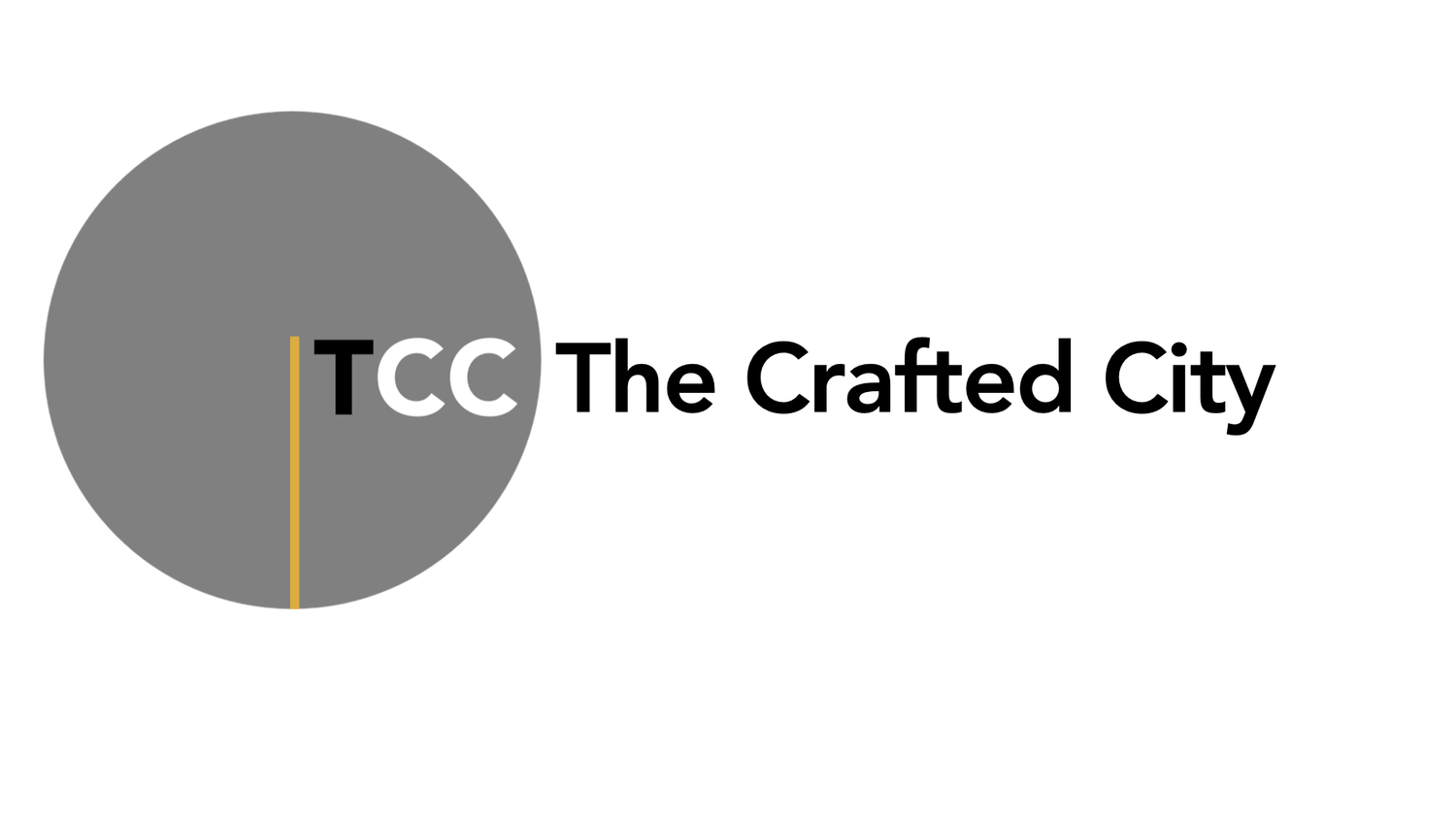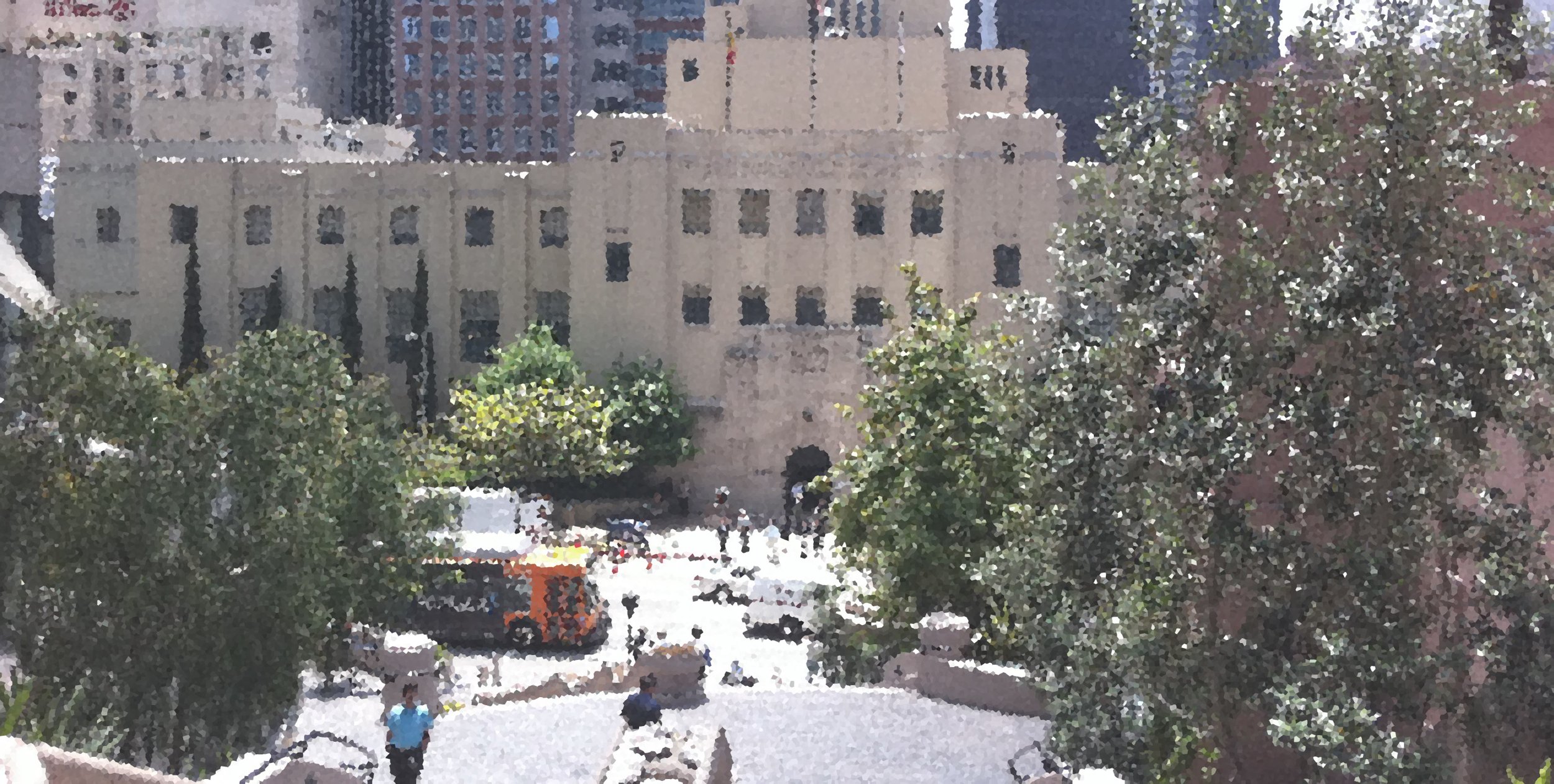THE CRAFTED CITY ARCHIVES
THE DISSAPOINTMENTS ON THE WAY TOWARDS DENSITY
Bringing density back in to city making has been back in vogue for awhile with the reintroduction of the 'Transit Oriented District'. This hasn't been without its disappointments.
BUILDING CITIES IN A DEMOCRACY
In the United States of America, we believe in a democracy based on the rule of law. The thought is that the rule of law will create a better society, one that promotes Life, Liberty, and the Pursuit of Happiness. As civilization has progressed, no-one seems to have come up with a better idea.
Taking this idea, and translating it into how we make cities, the Democratic choice and the rule of law guides us to build in one of two ways, and in America, we've done both.
DESIGN REVIEW
In Pasadena, where I live, the community values careful monitoring of the design of new construction and remodeling of buildings. The city has established a panel to review proposed building projects which, as a group, is aptly called, 'The Design Review Board'. This panel, consisting of professionals and other appointed interested parties, takes its work seriously. It's not easy to get their approval.
KEEP OR TEAR DOWN
Witness the ongoing saga at the Museum of Modern Art in New York. With the acquisition of the American Folk Art Museum on West 53rd Street, came a crafted building praised by many critics. After some wavering on the issue, it was announced that this building would be torn down to make way for a new MoMA addition, throwing MoMA headlong into a classic preservation debate. Keep or Tear Down. Keep the quirky structure by the architects Tod Williams + Billie Tsein, with all of its accompanying issues mis-matched floor elevations and the like, or scrape it clean and start over.
CONNECTING TO THE HIGH LINE
The High Line in New York is a public way, a kind of a street. By no means does it replace the street at grade, in function, nor in its full relationship with the surrounding buildings. The original trestles and freight rails did respond to a particular 'need' that the surrounding buildings had, that is, the movement of goods to and between them. Over the years this need faded away; eventually it was creatively repurposed to fill the need for new York's inhabitants to move around on foot, in an outdoor and public space that provided a calming antidote to the bustling city life. So in claiming public access, providing up-and-over connectivity, and in continuing (albeit in a different way from the trestles) a relationship with the surrounding buildings, the High Line becomes a substitute street.
APPROACHING THE DISNEY
Everything about moving up through the building helps to build the excitement. We'll start with the long and deep red space that houses the linear assent up from the parking garage. The zig and zag through the main lobby spaces, a sequence of unexpected volumes, all lined with the beautiful fir paneling, foretelling the concert hall inside. Working up to more intimate spaces that lead to the part of the hall you are headed towards. Free flowing and refined, adventurous and in good taste, with a sense of movement the whole time. Finally, the concert goer moves through a discreet portal and into the great concert space, the musical instrument in which you will experience the concert. Wonderful experience in site and sound. The very culmination of why the procession is so important in architecture. It places you in the right frame of mind to experience great art.
NEW ORLEANS
Its people tend to prefer buildings that play along with the agreed upon architectural style, but there has always been some room for the adventurous and creative. Alas, there has also been an element of the crass and carelessly expeditious. Things decay, and sometimes they are blown away, and they are lovingly brought back, or stuck together with plywood and caulk and painted chartreuse to honor Mardi Gras.
SETBACK INVIOLATE
Where I come from, building setbacks at the front are primary and irrefutable elements of the zoning code. Intrusion is forbidden up to a few inches above the ground plane, except for landscaping and the odd lamp-post. The front-yard setback is the hallmark what what is considered to be good suburban design, the semi-public space that sets a residence or other suburban building away from the activities of the street, and helps to create a pleasant and pastoral street volume.
STATE OF THE STATE
"The rest of the country looks to California. Not for what is conventional, but for what is necessary—necessary to keep faith with our courageous forebears.What we have done together and what we must do in the coming years is big, but it pales in comparison to the indomitable courage of those who discovered and each decade thereafter built a more abundant California. As Legislators, It is your duty and privilege to pass laws. But what we need to do for our future will require more than producing hundreds of new laws each year.
THE OUTDOOR ROOM
My architect world-view changed with the realization that one of the things I appreciated most about cities is the spatial progression down the streets and public places, the ever changing volume between buildings and level of activity that revealed itself as I walked or rode. The change in my perception came from the realization over time that this continually changing outdoor space was of the public city was considerably more important in its totality then any of the given buildings along the way-no mater how significant and finely executed. The dynamic tension between the great and small spaces created between structures, the 'leaky' interstitial, the collective details and textures compelled me as something that made for a greater whole. It's now a key part of what makes me understand a city, and it's a realization that greatly affects how I practice as an architect.
THE ECONOMICS OF CRAFT
The title of an interesting article about craft in the New York Times, by NPR correspondent Alan Davidson. Interesting to me, because I'm curious about the economic models that support crafts-people and how they compare with the economics of those who craft cities, and the value to those who support the craft.
TRANSITION
The architect gathers information to program and make a parti for the design of a building, new or substantially reworked. She arrives at a form based on function and an overriding set of architectural design principals. Some heed is paid to the characteristics of the site, and the practicalities of the design and the construction ensue.
LINKS IN THE CRAFTED CITY
"Guenther Demnig is the artist and sculptor behind the stumbling stones (shown in the photo in the link). Here, he installs new bricks in Berlin. He says formal memorials are too abstract. Not so with the stumbling stones. 'Suddenly they are there, right outside your front door, at your feet, in front of you,' he says."
THE BEST USE OF RESOURCES
With a few exceptions, city builders of the 'civilized' world are confronted with considerable rules to follow, and clearances to be reviewed, in order to be allowed to build a project. These are processes devised for the public good, established to enforce the public will, to make manifest the political power of government, and to greatly influence and control what may be constructed within a community. They are also processes that happen to squander our resources, and hamper us (all of us) in building the best possible cities.
LAYERS
Cities that are more than a generation old take on the characteristics of layering, exhibiting the slices of life and its physical trappings of their years. New buildings are constructed next to old, renovations are made on top of existing structures needing repair, and there is the introduction of new uses in structures to take the place of the obsolete…
APPLE STORES
Apple stores are textbook cases for how buildings and businesses can contribute and make a good city. They add substance and interest beyond their initial functional purpose; they are conceived and constructed with the deepest care. Although they take on a machine-like character, they are executed with considerable skill, lavished with attention to detail, and are well loved by the designers, builders, and the ones writing the checks. They are ultimate crafted urban element, a gift to each place that makes a home for them.
THE NEW ROUTEMASTER
Busses are not good urban citizens. They do carry a lot of people at a relatively low cost, but there are a lot of things they don't do well: they don't play well with other vehicles, they are a menace to pedestrians, they don't maneuver very well, they are a visual blight. They serve a specific need in public transportation, but over the years as transportation agencies have tried to control costs, buses have turned into hissing, grunting leviathans.
A TALE OF TWO CITY PROJECTS
Two projects, similar types of urban design philosophies, one loved, the other… not.
CITIES ON THE EDGE
"Cities are brokers of complex truths, the result of decisions that are registered on their very surfaces. Three exemplars in this regard are New Orleans, Detroit, and Phoenix; in Detroit parlance- the “New Big Three.” These cities are serving as the scouts for the rest of the nation as they confront some of our most pressing challenges."
EVERYTHING WE WANT
Shopping can be frustrating, or an exercise in spending too much, but we also know that it can be richly pleasurable. What about finding a way to go back to that local shop, a place that happens to be easy to get to (maybe even walk to!), has the stuff we want, and is priced well? That is certainly a way to incite pleasurable shopping. It would be a difficult, yet delicious problem to solve-perhaps never completely solvable (that's why it's 'unobtainable'). The diverging forces of processing and manufacturing, transport and marketing don't make it easy, and it's getting more difficult every day. Yet this may be the time to try and achieve it.




















